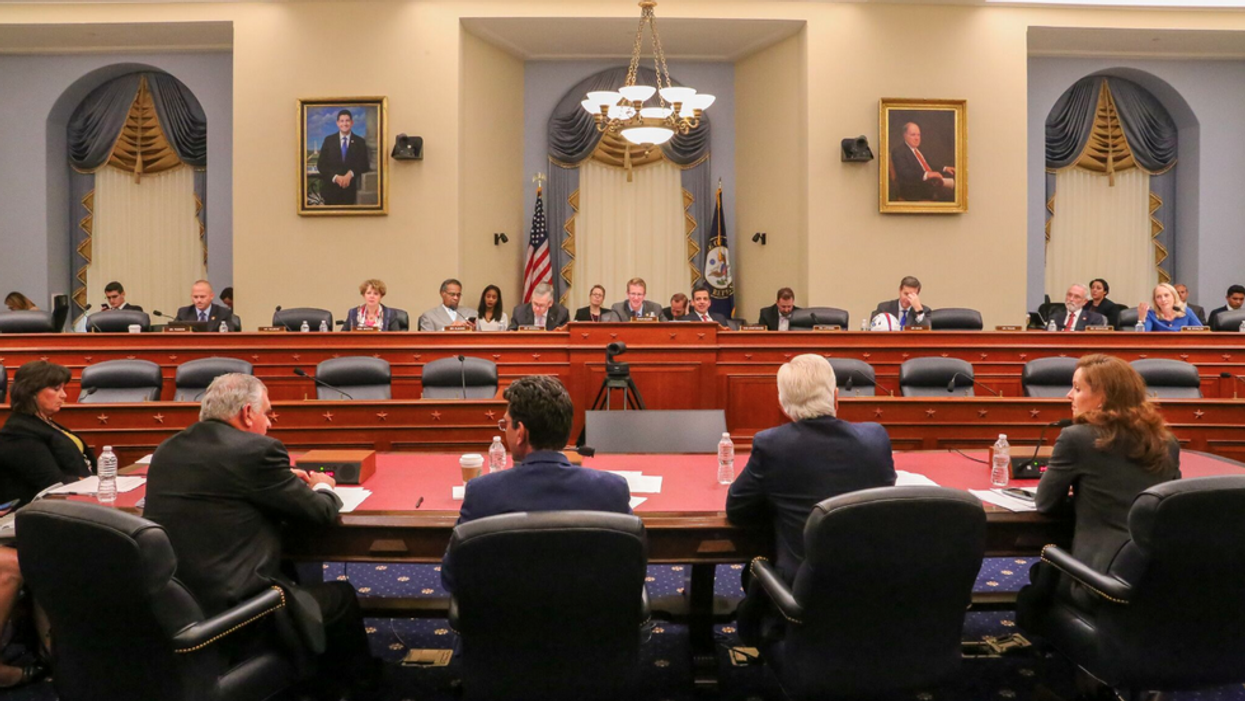Strand is president of the Congressional Institute, a nonprofit that seeks to help members of Congress better serve their constituents and their constituents better understand Congress. He testified before the House Select Committee on the Modernization of Congress in March.
As the House of Representatives marches toward a partisan impeachment, the American public can be forgiven for missing a bright spot of productive bipartisanship: the Select Committee on the Modernization of Congress. After an encouraging year of bipartisan committee work, the House voted last week to extend the panel for a year.
This committee has made 29 unanimous recommendations to improve technology, transparency, accessibility and constituent engagement as well as provide better support for staff. Twenty-nine unanimous recommendations. And these aren't boiler plate measures like "The House should have more transparency." They are well thought-out solutions that can be taken up by committees of jurisdiction, such as allowing new members to hire a transition staffer, promoting civility during new-member orientation, streamlining bill writing and finalizing a system to easily track how amendments would alter legislation and impact current law.
The committee's members wanted to be part of this work. They understand how important it is for the House to catch up with modern times. There's still a lot of work to do, though, which is why it's great they will be able to continue through the end of 2020.
The success so far is due to the panel's bipartisan nature. The six members from each party, led by Democratic Chairman Derek Kilmer of Washington and GOP Vice Chairman Tom Graves of Georgia, have spent countless hours meeting with each other, their colleagues and outside groups that are focused on various aspects of federal modernization.
The Congressional Institute is one of those groups. For several years, we have advocated for reforming Congress to make it effective. Few would say Congress is working as well as it should. Partisan gridlock certainly plays an enormous role in this, but there are institutional changes that have nothing to do with politics that will help modernize both the House and the Senate.
We have looked at a number of issues including fixing the authorization process to restore checks and balances, instituting biennial budgeting, changing the start of the federal fiscal year from Oct. 1 to Jan. 1, and even restoring earmarks both as a legislative tool and to shift funding decisions from the executive branch back to the legislative branch — where the Constitution says they belong.
For years, Congress has fallen short of its budget responsibility. The process has become a farce with continuing resolutions — which are supposed to act as short-term patches allowing the government to run while Congress continues debate — acting as budgeting tools. The 35-day shutdown that ended in January should be all the evidence and incentive lawmakers need to reform that process.
It has been 25 years since the last time Congress completed a budget on time — meaning the 12 separate bills designed to provide funding for all discretionary programs were passed and signed by the start of the fiscal year. Since then, CRs and catchall spending packages have become chronic, and have come to be seen as an acceptable way of doing business.
Except that it's not.
Deviations from the intended appropriations mechanisms have greatly reduced Congress' role in shaping the budget and eroded its responsibility to conduct proper oversight. As the budget process has broken down, the authority to negotiate with the White House shifted to Hill leaders, giving administration officials little incentive to engage with committee chairmen.
As Congress ceded its position as a co-equal in the budget process, it also drifted away from authorizations and appropriations as a regular course of business. Congress enacted about $310 billion in unauthorized appropriations four years ago, according to the Congressional Budget Office — about one-third of all discretionary funding. The amount has grown precipitously since 1985, when the CBO began keeping track of money allocated to programs not actually authorized by Congress.
The way to stop this from happening is to revive the authorization process by giving power back to the committees assigned to write that sort if legislation.
It's also time to consider a two-year budget cycle as a way to give lawmakers more time to do their work. Biennial budgeting can reduce the impact of politics on the process. And focusing on authorizing in one year, and spending in the next, would help members better and more effectively focus on both their tasks.
Fixing the budget and getting spending under control are hardly the only targets for reform.
Public approval for Congress is near the record low. Too many Americans feel their legislators aren't listening to them and aren't looking out for their best interests. Helping members more effectively engage with the people they were elected to represent will show the public that lawmakers do care. Those of us who worked on Capitol Hill know this to be true.
Opening up the legislative process to more amendments on the House floor would give members incentives to participate rather than feeling like spectators.
In March, the Modernization Committee set aside a day where 32 House members testified and another three provided written comments. What they talked about included the unpredictable nature of the congressional schedule, challenges setting up district offices for new members, antiquated technology, and staffing capacity and workforce concerns.
Members are clearly concerned for the future of Congress. These are not partisan or political concerns. In fact, that's one reason the committee has been successful: It has been careful to avoid political considerations. It is working hard to make smart, common-sense recommendations that can be turned into legislative proposals, although maybe not all right away. Hopefully a few years from now someone will still say: "The Kilmer-Graves committee had this great idea; let's adopt it."
That's why it's so important that the House voted to let the committee continue. It's refreshing to see members of the two parties work together. They have earned the respect of their colleagues. They, and many outside groups that are advocating to make Congress effective, look forward to what the Modernization Committee accomplishes next year.



















